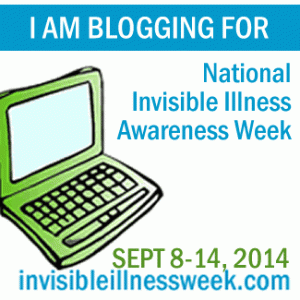 “But you don’t look sick” is a comment people with chronic illnesses hear a lot. And it’s true — 96% of all chronic illnesses are invisible, according to the folks behind Invisible Illness Awareness Week — but just because an illness can’t be seen doesn’t mean it isn’t real or debilitating.
“But you don’t look sick” is a comment people with chronic illnesses hear a lot. And it’s true — 96% of all chronic illnesses are invisible, according to the folks behind Invisible Illness Awareness Week — but just because an illness can’t be seen doesn’t mean it isn’t real or debilitating.
30 Things About My Invisible Illness You May Not Know
1. The illness I live with is: Chronic migraine
2. I was diagnosed with it in the year: 2002
3. But I had symptoms: All my life and have been chronic since I was 11
4. The biggest adjustment I’ve had to make is: Reconciling who I want to be with the limitations I face due to migraine (also, learning patience and flexibility)
5. Most people assume: Migraine is just a headache. Headache is a major part of migraine, but it is a neurological disorder with symptoms that can be felt throughout the body.
6. The hardest part about mornings is: Not knowing how much migraine will impact my plans for the day
7. My favorite medical TV show is: Scrubs
8. A gadget I couldn’t live without is: My Kindle
9. The hardest part about nights are: The nightmares and night sweats that accompany migraine attacks
10. Each day I take at least 17 pills & vitamins. (No comments, please)
11. Regarding alternative treatments: I’ll try anything that won’t harm me (and have even tried some things that are a little dubious)
12. If I had to choose between an invisible illness or visible I would choose: It’s hard to know for sure, but I appreciate being able to hide my illness when I want to.
13. Regarding working and career: I’ve gone from thinking I’d never have a fulfilling career to realizing I’ve been building one all these years I’ve been blogging. I just needed to feel well enough to take the next step… and I think I’m almost there.
14. People would be surprised to know: Just how much pain and fatigue I have on “good” days
15. The hardest thing to accept about my new reality has been: Hard work doesn’t always reap rewards
16. Something I never thought I could do with my illness that I did was: Find a fulfilling career
17. The commercials about my illness: Make it seem like migraine attacks are easily controlled with medication (they are for some people, but not at all for others)
18. Something I really miss doing since I was diagnosed is: Making plans without the caveat that I may have to cancel
19. It was really hard to have to give up: Food (literally for a while, now I have an extremely limited diet with only a few foods I truly enjoy)
20. A new hobby I have taken up since my diagnosis is: Meditation
21. If I could have one day of feeling normal again I would: That’s not something I let myself think about
22. My illness has taught me: I am stronger and more courageous than I ever thought possible
23. Want to know a secret? One thing people say that gets under my skin is: Positive thinking will “cure” me
24. But I love it when people: Keep in touch even when they don’t hear back from me.
25. My favorite motto, scripture, quote that gets me through tough times is: “When you’re going through hell, keep going” and “Never, never, never give up” — both from Winston Churchill
26. When someone is diagnosed I’d like to tell them: No one is going to cure you. Health care providers have valuable knowledge and can help you, but they aren’t mechanics. You have to play an active role in you own care, investigate potential treatments and be willing to pursue unexpected avenues.
27. Something that has surprised me about living with an illness is: How often people are blamed for being sick
28. The nicest thing someone did for me when I wasn’t feeling well was: My husband telling me that when I don’t feel like I have the strength to continue, he’ll carry me
29. I’m involved with Invisible Illness Week because: Being open and honest about illness is the only way anyone’s beliefs about it will change
30. The fact that you read this list makes me feel: Cared for
Want to respond to the 30 things meme but don’t have a blog? You can leave your responses in the comments!
 Invisible Illness is the theme of this month’s Headache Disorders & Migraine Blog Carnival. I asked bloggers to share their thoughts on living with an invisible illness or respond to the 30 Things You May Not Know About My Invisible Illness meme sponsored by Invisible Illness Awareness Week.
Invisible Illness is the theme of this month’s Headache Disorders & Migraine Blog Carnival. I asked bloggers to share their thoughts on living with an invisible illness or respond to the 30 Things You May Not Know About My Invisible Illness meme sponsored by Invisible Illness Awareness Week.

